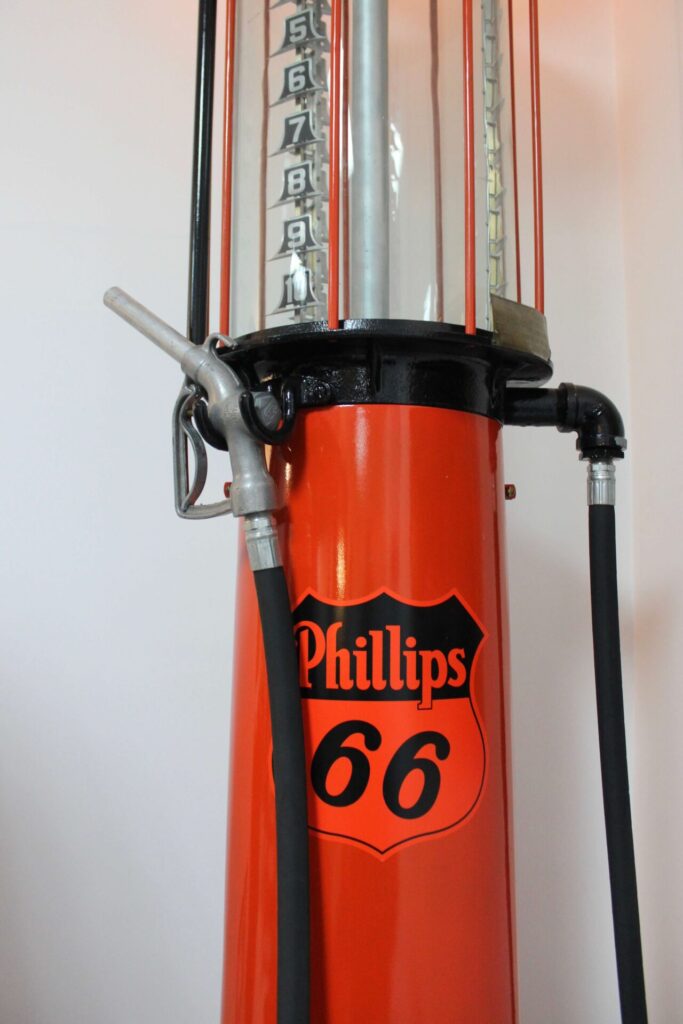The Automotive Dream “One man and his dream had not simply left the world with an engine and four wheels; Henry Ford and his Model T had influenced people's everyday lives - where they lived, how they spent their leisure time, even how they viewed themselves.” - Gary...
Gas Pumps
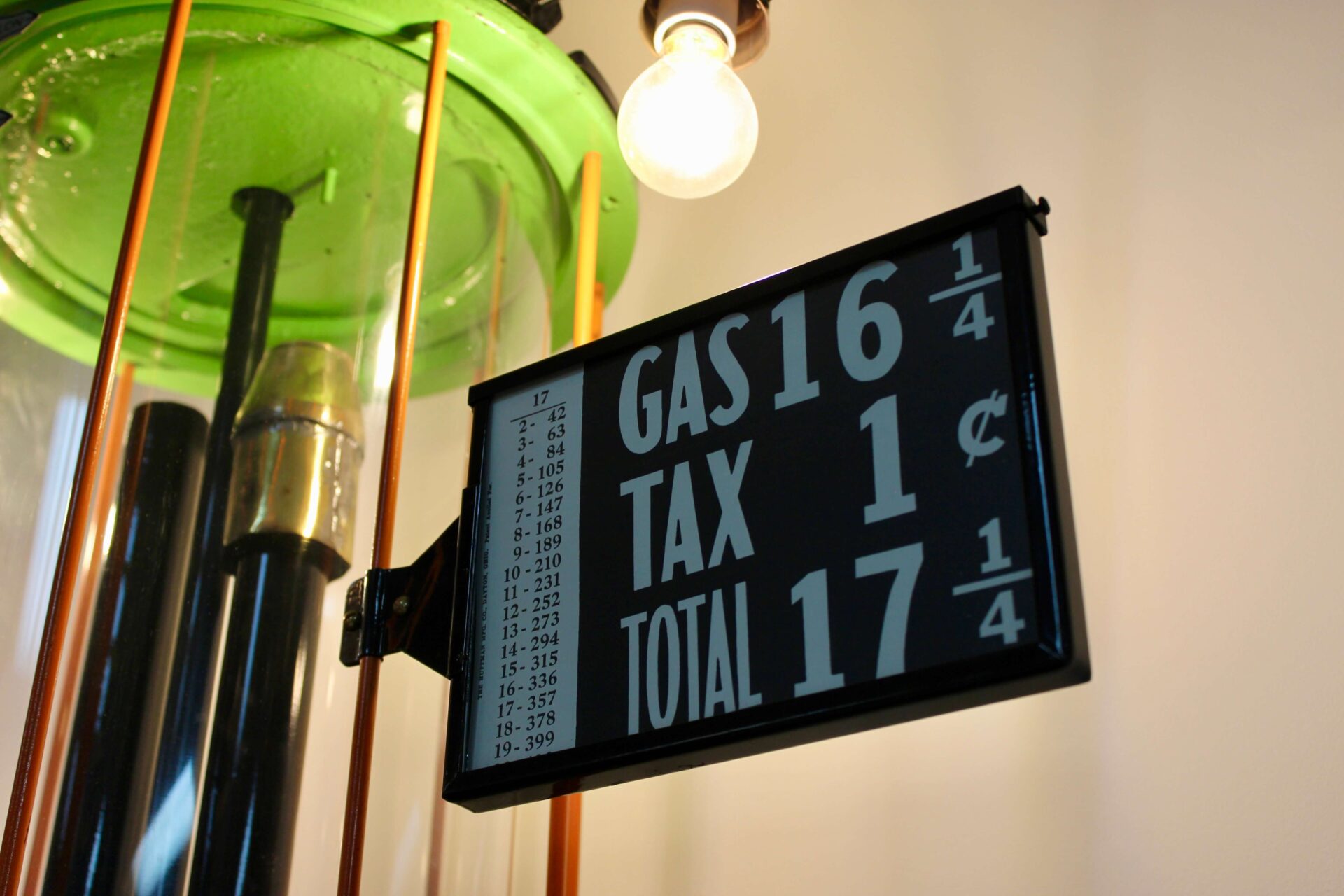
Recent posts
Lagonda 16/80 Special Six 1933
English Touring The car we present to you this week is the Lagonda 16/80 Special Six in the Demers Car Collection. Lagonda was a luxury British car brand that Aston Martin eventually absorbed. Through its association with Aston Martin, it is sometimes hard to remember...
An Introduction to Lagonda
Before Aston Martin “The history of Lagonda cars is synonymous with sophistication, opulence, and groundbreaking performance” - An article for Discovery UK Today, we may recognize the name Lagonda from its association with Aston Martin. Before these two brands...
Cadillac Model A 1903
The Standard of the World “No other American car on the market in the first decade of the century was constructed to higher standards than Cadillac.” - Stephen W. Sears in The Automobile in America Some of you may know that Cadillac has long had the slogan “Standard...
A Brief History
“This was to solve the problem and mess of a storekeeper ladling flammable liquid into whatever random container the customer brought.” – SafeRock
When people come to visit the Demers Car Collection, the cars are not the only artifacts on display. A display of antique gas pumps also greets visitors at the entrance. Collectible in their own right, antique gas pumps are the subject of this week’s blog article. Keep reading to learn more about the Bowser pump, the visible supply pump and how they evolved to the modern ones we use today.
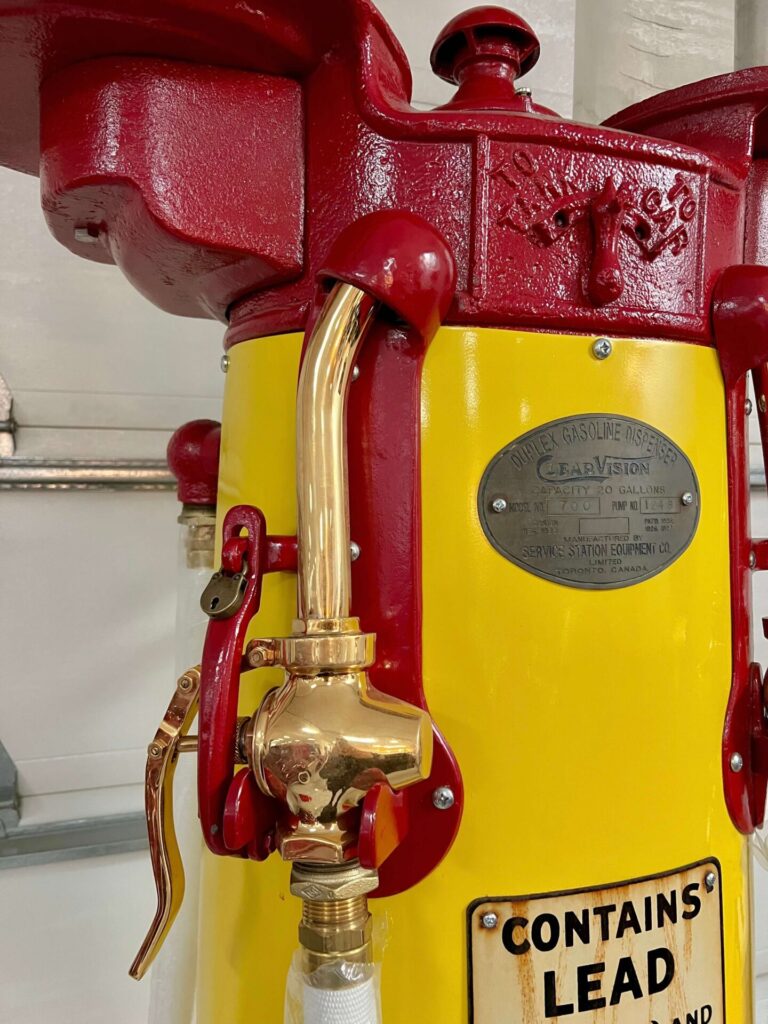
The Bowser Pump
Gasoline or petrol is a volatile distillate of crude oil. It is difficult to store and handle, it is highly flammable and it can even be explosive when vaporized. In the 1800s, gasoline wasn’t the obvious energy of choice to power engines. Steam was the preferred power source for most at the time. Others also experimented with coal gas and electricity. The development and perfecting of gasoline engines all over the world eventually gave the advantage to petrol. For the automobile world, gasoline was a magical substance that when it was stored properly, could be safe, and provide energy efficiently.
Before there were filling stations like we know today, gasoline was purchased from general stores or drug stores. The store clerk would pour the fluid straight from barrels into the customer’s preferred container. In 1885, Sylvanus F. Bowser invented a piston-activated petroleum pump. First used to measure kerosene to fill lamps and stoves, the new tool was soon of use to the automotive world. It made the filling process easier and safer. Clerks could now hand pump the gasoline into measuring cans before funneling it into a car’s fuel tank.
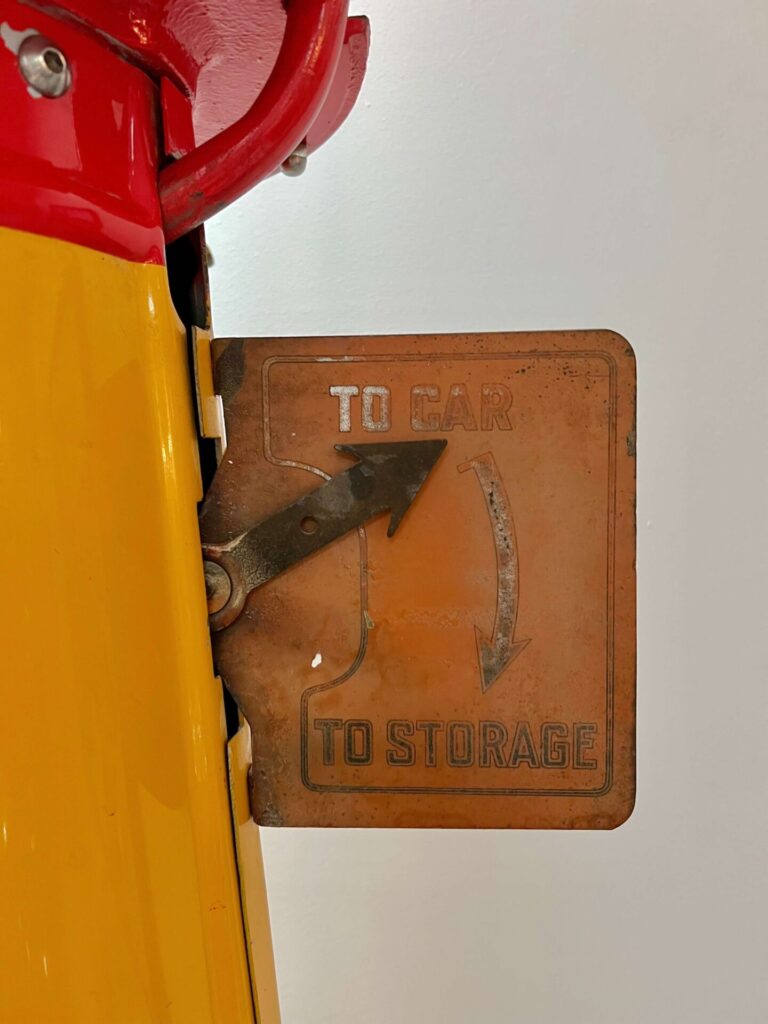
The Visible Supply Pump
Improvements to the Bowser pump happened very quickly. First, it was calibrated so that each pump would pour 1 gallon of gas. and a hose and nozzle were then added so that gasoline could be poured directly into the car. Safety measures were also introduced. Having a reliable pump made life safer, but much was yet to come. Understandably so, customers were sometimes suspicious of the 1 gallon per pump measuring system and new developments soon arose.
One of these improvements was the clockface, which allowed the clerk to calculate more precisely how much gas was poured in. Indeed, before that, one would have to listen to the sound in the gas tank or look into it to see how full it was, a process that is both inefficient and unsafe. Another improvement, common from the 1920s on, was the “visible supply” gasoline pump. These new pumps had large, glass, graduated cylinders. By then, gasoline was already stored in underground tanks. Gas was first pumped into the cylinder before being released down by gravity into the car’s fuel tank. Being able to see the gas and the measures on the cylinders assured the motorists of the quality and quantity of it. Still, gas could only be bought according to a desired quantity with the price having to be calculated accordingly.
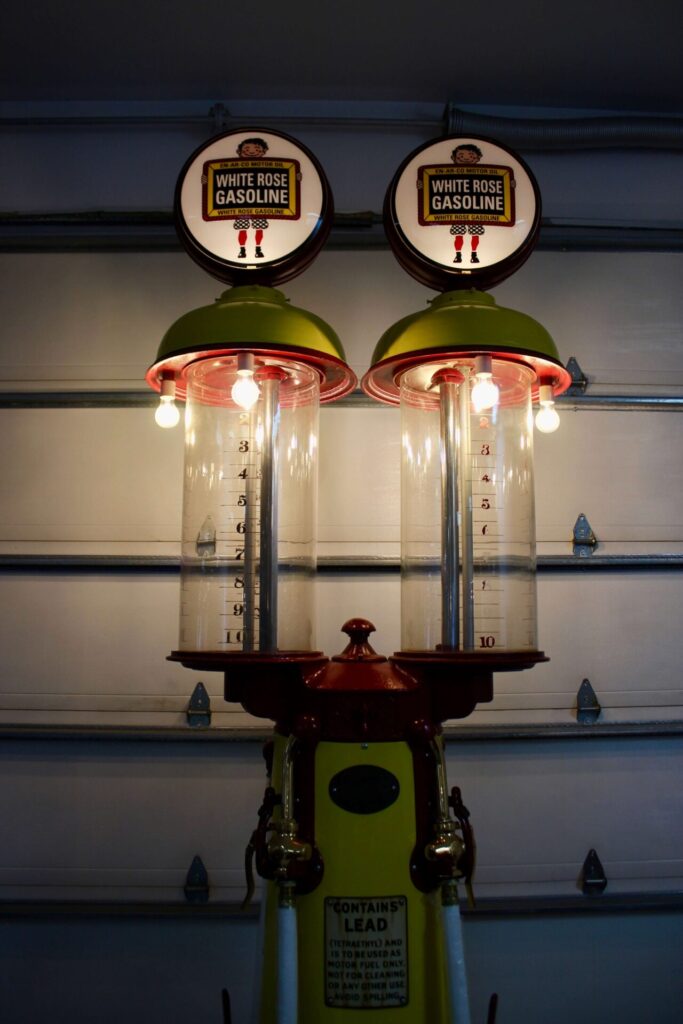
In this period, gasoline pumps were decorated in art-deco style. They were painted in bright colors and lights were often added. This made them visible from afar and attracted the motorist’s eye. Before the branding of gasoline, no logo was advertised on the pump. Eventually, pumps clearly showed what gas brand they were distributing. When a merchant changed suppliers, they would paint and change the branding of the pump rather than buying a new one.
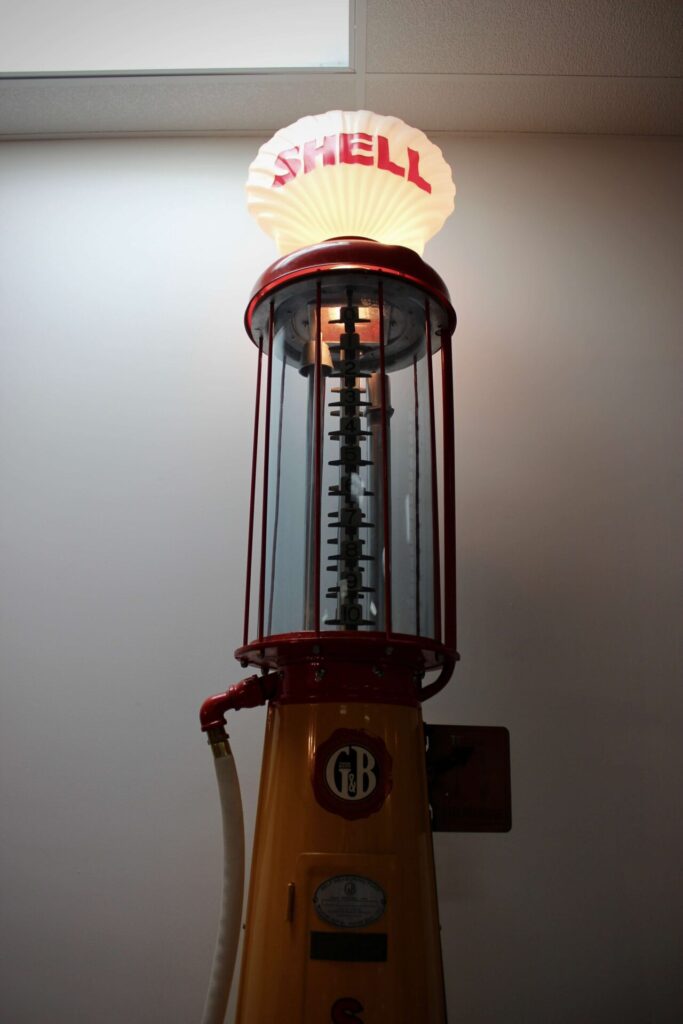
The Modern Pump
By the 1930s, the incorporation of electric motors into gas pumps eliminated the need for hand-pumping. Electric pumping gradually decreased the need for glass cylinders as measuring became more precise and customers got accustomed to the new filling stations. Eventually, “visible supply” pumps were outlawed and disappeared entirely as many municipalities deemed storing gas in glass containers unsafe. In the 1940s and 1950s, styling was toned down and streamlined and electronic interfaces were introduced. The final evolution was the introduction of computing gas pumps that would automatically calculate the price of the gas purchased. Before this, gas was always sold by the gallon and asking for a dollar amount of gas required much mental gymnastics. Among other modern developments, today’s gas pumps also have vapor recovery systems that allow the capture of escaping vapors to decrease environmental impact and product loss.
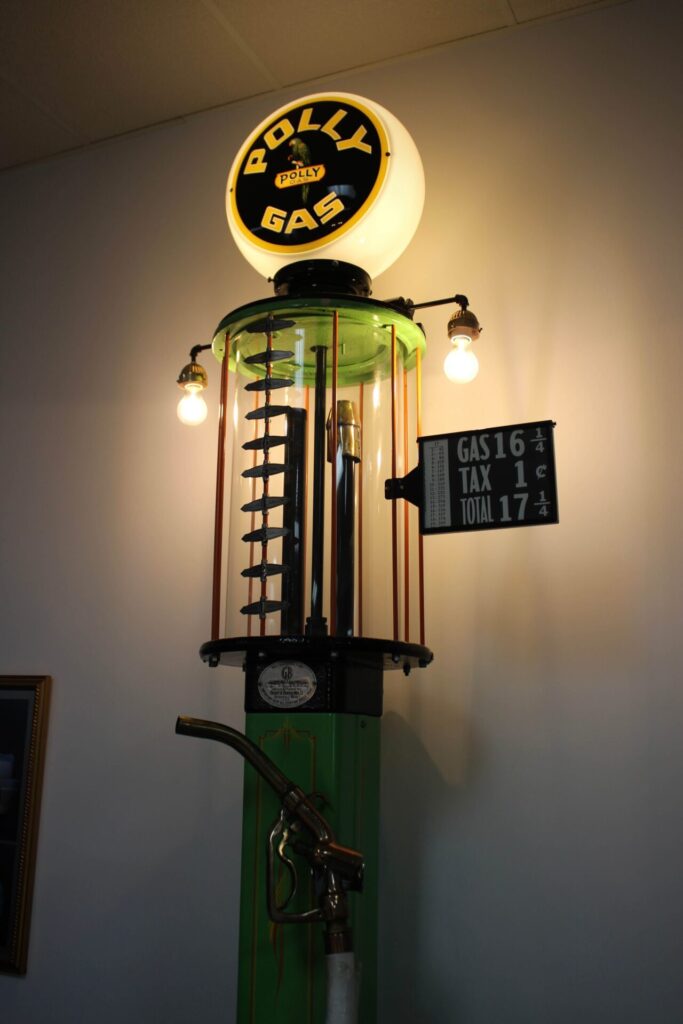
What Now
The antique gas pumps in the Demers Car Collection are excellent examples of the art-deco style. With their lights turned on, they give a great ambiance during guided tours of The Collection. If you are interested in seeing them up close, send us a filled-out contact form to inquire about pricing and available dates. In the meantime, don’t miss next week’s articles where we have a closer look at an orphan car in the Demers Car Collection: The Moon Car.
